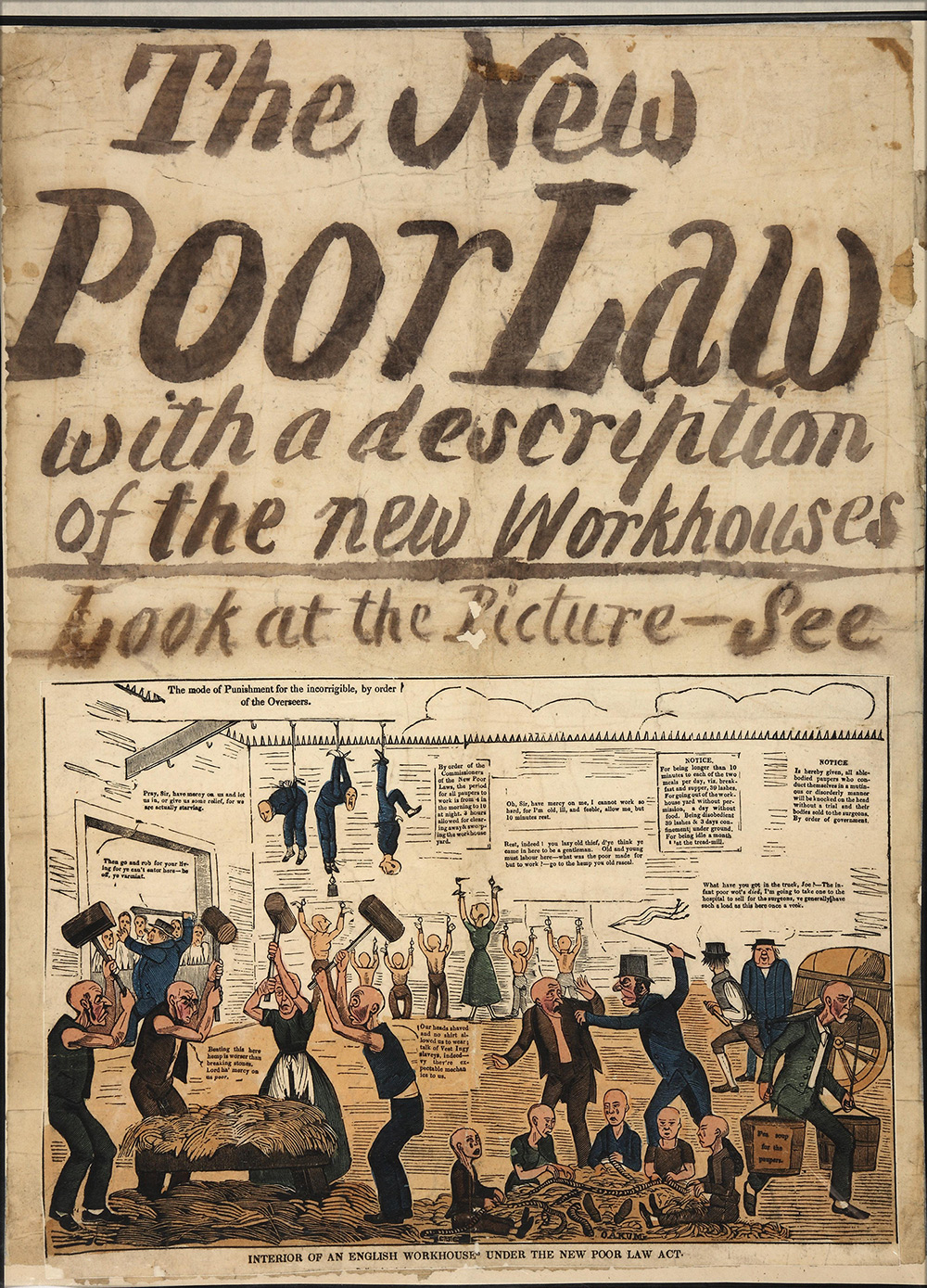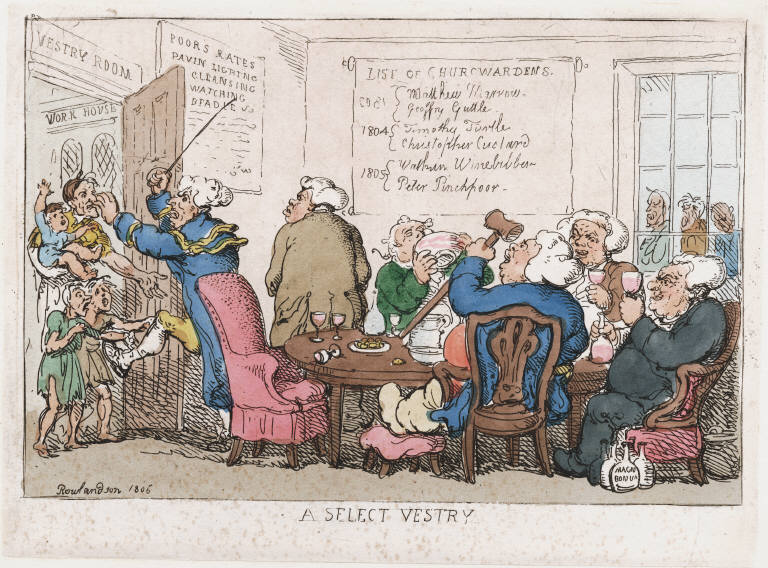The Elizabethan Poor Laws were a system for helping the needy. They started in England during the reign of Queen Elizabeth I.
These laws aimed to provide support to the poor and were among the first social welfare systems in history. During the 16th century, poverty was a growing concern in England. Many people struggled to survive as economic changes affected their lives.
The Elizabethan Poor Laws were introduced to manage this issue. They sought to organize aid for the poor, distinguishing between the deserving and undeserving. Local parishes were responsible for collecting taxes and distributing funds or resources. This system marked a significant step in social care and influenced later welfare programs. Understanding these laws helps us grasp the roots of modern social welfare and the historical context of poverty alleviation efforts.

Credit: www.nationalarchives.gov.uk
Origins Of Elizabethan Poor Laws
The Elizabethan Poor Laws emerged in the late 16th century. These laws were crucial for addressing poverty in England. They laid the groundwork for modern welfare systems. Understanding their origins helps us see their historical significance.
Economic And Social Context
The 16th century was a time of change. England faced economic challenges and social unrest. The population grew rapidly, causing pressure on resources. Many people moved to cities seeking work. This migration led to overcrowding and job scarcity. Agriculture was also changing, affecting rural employment. The rich-poor gap widened, causing tension. These factors demanded a solution to aid the poor.
Influence Of Earlier Laws
The Elizabethan Poor Laws were not created in isolation. They were influenced by earlier laws and practices. The Statute of Labourers in 1351 aimed to control wages and employment. The Vagabonds Act of 1531 targeted beggars and wandering poor. These laws set precedents for state involvement in poverty. They shaped the approach taken in the Elizabethan era. Building on past efforts, the Poor Laws sought to address the needs of the poor comprehensively.

Credit: www.londonlives.org
Key Provisions Of Poor Laws
The Elizabethan Poor Laws established a system to aid the needy in England. Local parishes provided food, shelter, and work. Taxes funded this support, ensuring community responsibility for the welfare of the poor.
The Elizabethan Poor Laws, enacted in the late 16th century, were a series of measures aimed at addressing poverty in England. These laws were foundational in shaping social welfare systems, and their key provisions offer a glimpse into how societies can care for those in need. Understanding these provisions can help us appreciate the complexities of social support systems and consider how these historical insights might inform modern approaches to poverty alleviation.
Types Of Relief
The Poor Laws introduced two main types of relief: outdoor relief and indoor relief. Outdoor relief allowed the poor to receive financial assistance while staying in their homes. This was crucial for families who could not afford to leave their homes but needed temporary support.
Indoor relief, on the other hand, required individuals to enter workhouses to receive aid. Workhouses were places where the poor could work in exchange for food and shelter. The goal was to encourage self-reliance, though conditions were often harsh.
The distinction between these types of relief highlights the balancing act between providing support and encouraging independence. Have you ever thought about how this balance is still relevant in today’s welfare debates?
Role Of Parishes
Parishes played a pivotal role in administering the Poor Laws. Each parish was responsible for caring for its own poor, which created a sense of local accountability. This meant that communities directly supported their neighbors, fostering a sense of responsibility and cooperation.
To fund the relief efforts, parishes collected a poor rate or tax from local landowners. This ensured that everyone contributed to the welfare of the community, regardless of their own financial situation. Imagine if your neighborhood was responsible for supporting its vulnerable members. How might that change your view on community involvement?
The parish’s role in the Poor Laws underscores the importance of local governance in managing social welfare. As you consider this, think about how local initiatives today can be empowered to make a difference in your community.
Administration And Implementation
The Elizabethan Poor Laws marked a pivotal moment in social welfare. These laws aimed to manage poverty through structured assistance. Their administration and implementation involved various stakeholders, each with distinct duties. Understanding these processes offers insights into historical governance.
Local Authorities’ Responsibilities
Local authorities played a crucial role in executing the Poor Laws. They were tasked with assessing individuals’ needs in their community. Each parish was responsible for its own poor. This meant providing aid to those unable to work. Parishes collected taxes to fund assistance programs. Overseers of the poor were appointed to manage relief efforts. Their job was to ensure aid reached those truly in need.
Challenges In Execution
Implementing the Poor Laws faced many hurdles. Some parishes lacked resources to support their poor adequately. There was a struggle to distinguish between deserving and undeserving poor. Fraud was a significant concern in administration. People falsely claimed poverty to receive benefits. This strained the system’s effectiveness. Corruption among officials sometimes misdirected funds intended for the poor.
Disparities between parishes led to unequal assistance. Wealthier areas provided better support than poorer regions. This inequality fostered tensions among neighboring communities. The laws demanded consistent enforcement across all areas. Yet, local differences complicated uniform execution.
Impact On Society
The Elizabethan Poor Laws were significant in shaping society. They established a framework for public assistance. These laws influenced various aspects of life. They changed how people viewed poverty and work. Understanding their impact helps in grasping social changes from that era.
Social Stratification Changes
The Poor Laws altered social classes. Wealthy individuals gained more power. They controlled resources and poor relief distribution. This led to a clear division between rich and poor. Many citizens identified based on their economic status. It affected how people interacted daily. Social mobility became more challenging. Opportunities were limited for those in lower classes. Social barriers strengthened, shaping societal norms.
Effect On Labor Market
The laws influenced the labor market significantly. They created a need for cheap labor. Poor individuals sought work to survive. Employers exploited their desperation. Jobs were scarce, wages were low. This increased competition for employment. It pressured workers to accept unfavorable conditions. Skilled labor was less valued, affecting economic growth. The labor market became a place of struggle for many. It shaped the employment landscape for years.
Criticism And Controversies
The Elizabethan Poor Laws faced criticism for their harsh treatment of the poor. Many argued they promoted social inequality. Others believed they fostered dependency rather than self-sufficiency among the needy.
The Elizabethan Poor Laws, enacted in the late 16th century, were among the first public efforts to address poverty. However, they were not without their critics and controversies. These laws aimed to provide relief to the poor while also discouraging idleness. Yet, they sparked heated debates about their fairness, effectiveness, and the very definition of poverty. Let’s delve into the criticisms surrounding these historic measures and explore the ongoing controversies they ignited.
Perceptions Of Poverty
The Elizabethan Poor Laws were based on the belief that poverty was often a result of personal failings. This perception painted a simplistic picture that didn’t capture the complexities of poverty. Many argued that these laws stigmatized the poor, labeling them as lazy or morally deficient.
Consider your own encounters with poverty. Have you noticed how often people judge rather than understand the circumstances? The laws reflected a time when society’s views on poverty were narrow, leading to solutions that might not have addressed the root causes.
The laws also created a division between the “deserving” and “undeserving” poor. Such distinctions were often arbitrary and subjective. This led to unfair treatment and resentment among those who were genuinely in need.
Debate Over Effectiveness
Critics questioned whether the Elizabethan Poor Laws truly alleviated poverty. While they provided some relief, they often offered temporary fixes rather than long-term solutions. The assistance was minimal and sometimes inaccessible, failing to make a significant impact on poverty levels.
Think about modern welfare systems. Are they solving poverty or merely managing it? The Elizabethan approach often left people in a cycle of dependence without opportunities for real change.
The administration of these laws was another point of contention. Local parishes had varying resources and interpretations, leading to inconsistent support. This disparity highlighted a lack of coordination and oversight, which undermined the laws’ effectiveness.
As you reflect on these criticisms and controversies, consider how they mirror current debates on social welfare. Are there lessons to learn from the past? The challenges faced then continue to resonate today, urging a re-evaluation of how society addresses poverty.
Legacy Of Poor Laws
The Elizabethan Poor Laws, enacted in England during the 16th century, laid the groundwork for how societies address poverty. These laws introduced the idea that the government should play a role in supporting those who cannot support themselves. The legacy of these laws is still visible today, influencing modern welfare systems and shaping enduring principles in social care.
Influence On Modern Welfare Systems
The Elizabethan Poor Laws established a framework that many countries have adapted into their welfare systems. They introduced the concept of local responsibility for the poor, which is mirrored in today’s local government assistance programs. Imagine living in a community that truly cares for each of its members, offering support when needed. This idea began with the Poor Laws.
These laws also classified the poor into categories, such as the deserving and undeserving poor. This classification influences modern debates on welfare eligibility and resource allocation. Think about how welfare policies today aim to identify genuine need—this stems from the Elizabethan approach.
Enduring Principles
The principles from the Elizabethan Poor Laws continue to guide social policy today. They emphasized the importance of work and self-sufficiency, encouraging the able-bodied to find employment. Consider how this principle is reflected in modern welfare reforms, which often focus on job training and employment programs.
Another enduring principle is the responsibility of the community to support its vulnerable members. The laws fostered a sense of communal duty that persists in today’s social services. How do you see your community stepping up to help those in need? This legacy challenges us to think about our role in supporting others.
As you reflect on these principles, consider how they apply to current social issues. What lessons can be learned from the past to improve the present? The Elizabethan Poor Laws offer a historical perspective on the timeless challenge of addressing poverty.
Comparisons With Contemporary Welfare
The Elizabethan Poor Laws laid the foundation for welfare systems. By exploring these laws, we can understand how historical welfare compares with contemporary policies. This section delves into the similarities and differences, offering insights for modern welfare approaches.
Similarities And Differences
Both the Elizabethan Poor Laws and today’s welfare aim to support those in need. They provide assistance to individuals who cannot support themselves. These systems ensure basic needs are met for the vulnerable.
Elizabethan laws focused on local responsibility. Communities took care of their poor. Modern welfare, on the other hand, often involves national systems. Government programs play a significant role.
Funding methods differ greatly. Elizabethan welfare relied on local taxes. Today’s systems use broader tax bases. This allows for more comprehensive support.
Lessons For Modern Policies
The Elizabethan Poor Laws teach us the value of community involvement. Local support can be effective in addressing specific needs. Modern policies can benefit from community-driven approaches.
Accountability was a key feature of Elizabethan laws. Ensuring funds are used correctly is crucial. Contemporary welfare can improve by emphasizing accountability.
Balancing local and national support remains vital. Combining these can create effective welfare strategies. The lessons from history provide valuable insights for today.
Evolution Post-elizabethan Era
The Elizabethan Poor Laws laid the foundation for social welfare in England. These laws set the stage for centuries of welfare evolution. As society progressed, these laws evolved to address new challenges. The post-Elizabethan era saw significant shifts in welfare policies. Changing economic and social landscapes drove these transformations.
Transition To 19th Century Welfare
The 19th century brought industrialization, impacting society deeply. Rapid urbanization created new poverty challenges. The Poor Laws had to adapt to these changes. Workhouses became more prevalent during this time. They aimed to provide shelter and work for the needy. Yet, conditions in workhouses were often harsh. This led to public outcry and demand for reform.
Reforms And Changes
Public pressure led to the Poor Law Amendment Act of 1834. This act aimed to improve conditions for the poor. It reduced reliance on workhouses and encouraged outdoor relief. Outdoor relief provided support without requiring residence in workhouses. This change marked a shift towards more humane welfare policies.
As the century progressed, additional reforms took place. The government began to recognize the need for better welfare systems. Economic and social reforms continued to shape welfare policies. These changes set the stage for modern welfare systems. The evolution of these laws reflects society’s growing commitment to social responsibility.
FAQs
What Are The 5 Important Factors Of The Elizabethan Poor Laws?
The Elizabethan Poor Laws focused on local responsibility, classification of the poor, workhouses, outdoor relief, and apprenticeship. These laws aimed to provide support while encouraging self-sufficiency. They established a foundation for modern welfare systems, addressing poverty and unemployment through structured assistance.
What Were The Poor Laws In Elizabeth?
The Elizabethan Poor Laws were a set of laws from 1601. They aimed to provide relief for the poor through local parish support. These laws categorized the poor into those unable to work and those unwilling. They laid the foundation for England’s welfare system.
What Are The Elizabethan Poor Laws Known As?
The Elizabethan Poor Laws are commonly known as the “Old Poor Law. ” They were established in 1601 in England. These laws aimed to provide relief to the poor and needy through local parishes. They laid the foundation for modern social welfare systems.
What Did The Poor Do In The Elizabethan Era?
The poor in the Elizabethan era often worked as laborers or servants. Many relied on charity or alms. Some engaged in begging or petty theft. They lived in overcrowded, unsanitary conditions and struggled to survive daily. The Poor Laws provided minimal support through almshouses and workhouses.
Conclusion
The Elizabethan Poor Laws laid a foundation for social welfare. These laws shaped how societies cared for the needy. They introduced the idea of government support. Communities took responsibility for their poor. This was a significant shift in thinking. The laws aimed to reduce poverty and support the vulnerable.
Their legacy is visible in modern welfare systems. Understanding these laws helps us appreciate social support evolution. They remind us of the importance of caring for all citizens. A key lesson from history. Providing for those in need remains essential today.








